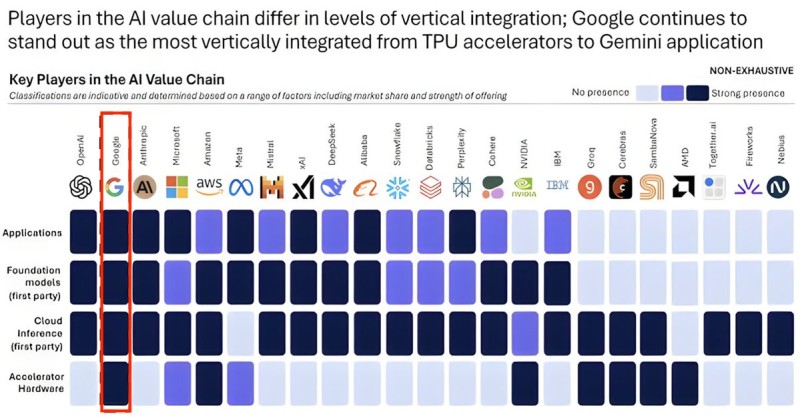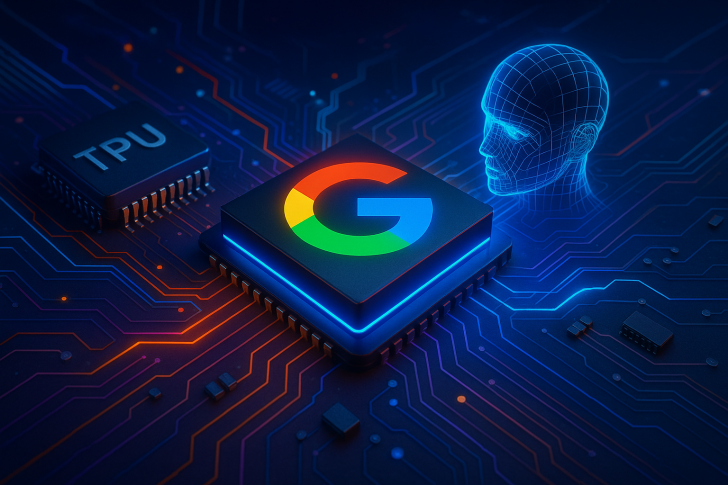A recent industry chart has confirmed a key observation: Google stands alone as the only company with deep native presence across every layer of the AI stack. While competitors specialize in specific areas, Google operates a complete vertical ecosystem that spans hardware manufacturing, cloud infrastructure, foundation models, and end-user applications.
Google's Complete Vertical Integration
Trader Lin recently highlighted on X an industry chart that showcases the competitive landscape of AI development.

The newly shared data visual compares over 20 major AI players and reveals where each company has strong or limited presence across four critical layers: Accelerator Hardware, Cloud Inference, Foundation Models, and Applications. Google's column is entirely filled, showing complete ownership across the stack:
- Hardware: TPUs (Tensor Processing Units) designed specifically for machine learning workloads
- Cloud Infrastructure: Google Cloud powers both internal AI training and third-party inference at scale
- Foundation Models: The DeepMind Gemini family provides in-house language and multimodal capabilities
- Applications: Gemini-powered tools, Workspace AI features, and Android integrations reach billions of users daily
Beyond these core layers, Google's reach extends into Edge AI through Pixel smartphones, Physical AI via Waymo's autonomous driving systems, and strategic investments including its stake in Anthropic. The company's highly profitable advertising business provides the financial foundation to fund aggressive AI scaling without external pressure.
Where Competitors Fall Short
The chart highlights a fundamental difference between Google and its rivals. OpenAI excels at applications and models but depends entirely on Microsoft Azure for compute power. Microsoft controls extensive cloud infrastructure but lacks proprietary AI chips. Anthropic builds impressive models yet relies on external providers for both training and deployment. NVIDIA dominates the chip market but has minimal presence in software and consumer-facing products. Only Google owns and operates the complete pipeline, enabling tighter coordination between hardware and software, reduced inference costs, and faster development cycles.
Strategic Advantages of End-to-End Control
Owning every layer creates multiple compounding benefits. Hardware and software evolve together, driving continuous efficiency improvements. Data and models remain within Google's infrastructure, minimizing third-party security risks. Internal compute capacity reduces dependency on external suppliers like NVIDIA. The integrated system enables rapid deployment of AI features across products and platforms. This approach mirrors Apple's success in mobile computing, where vertical integration delivered both superior performance and market dominance.
 Saad Ullah
Saad Ullah

 Saad Ullah
Saad Ullah


